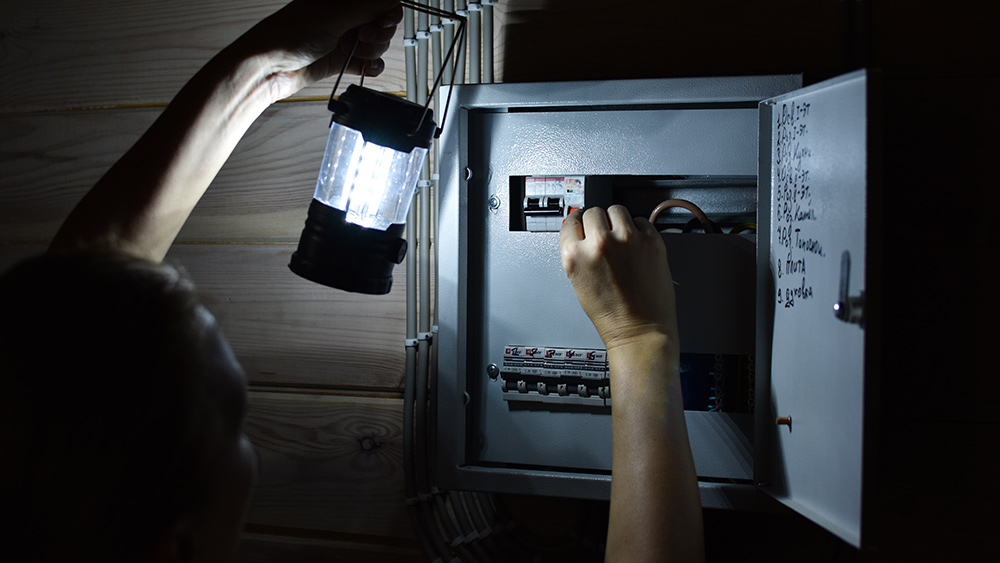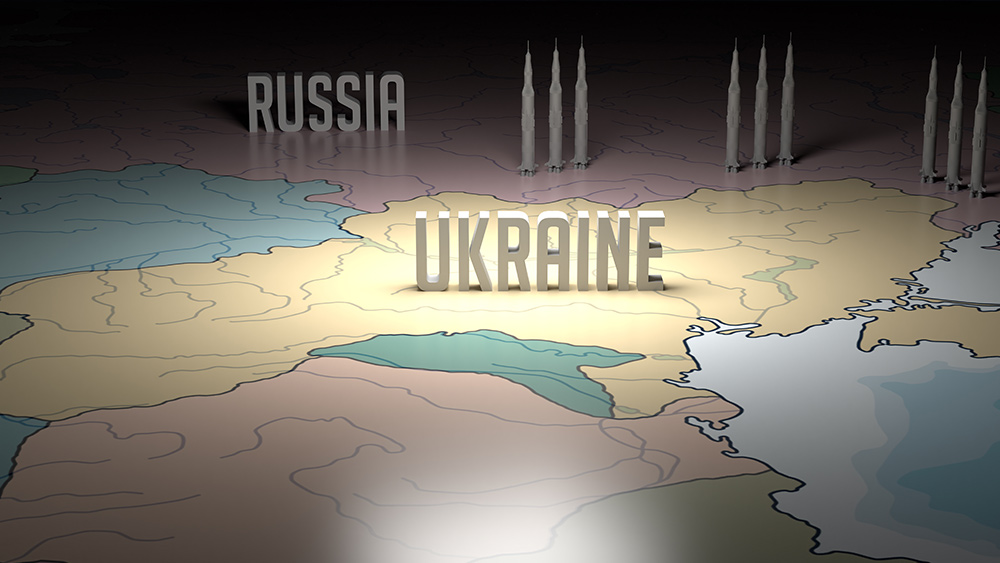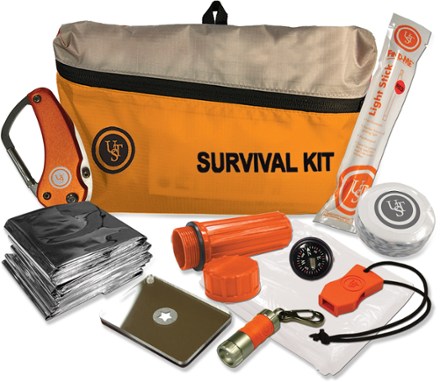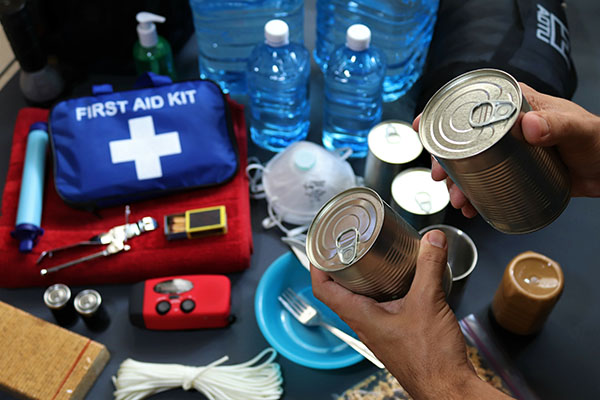Top 10 survival hacks for generating electricity
07/02/2024 / By HRS Editors

Some non-preppers may take things like electricity for granted until they are in a scenario where they no longer have it. It can be hard to find a reliable power source, especially if you are unprepared for a widespread power outage or grid-down emergency.
And while storing energy has become more effective thanks to advancements in battery technology, you still need to generate electricity. (h/t to TruePrepper.com)
Before SHTF, you can benefit from knowing the different ways to generate electricity on your homestead. Once you have prepared a reliable alternative energy source, you can also prepare by stocking up on shelf-stable food like grains and nuts.
Solar power
In most emergencies, even after natural disasters, the sun will still shine.
Solar power is one of the most reliable alternative energy sources, but it can also be one of the most intimidating. It may require a big financial investment depending on the method you choose, but it’s also becoming cheaper.
Sometimes the government also offers incentives for a solar home system.
Gasoline generator
Gas generators are one of the most popular options for emergencies and power outages. However, gasoline isn’t the most stable fuel so you need to store gas and fuel stabilizer in your stockpile so it’s ready when you need it.
Crank generator
Crank flashlights often come with emergency radios because they require very little power.
Note that the crank function won’t be generating many watt-hours but it could be enough to make sure an important text gets through during an emergency.
Natural gas and LP (liquid propane) generators
Propane and natural gas are the leading choices for home standby generators. Natural gas is usually less prone to outages during emergencies, especially when compared to electricity, and propane is usually stored on-site in tanks.
These options are ideal for short-term emergencies and natural disasters but they may lose viability if supply chain difficulties become permanent.
If you can get large tanks, you can store a large amount of fuel. Just make sure you follow the half-tank rule to maximize your preparedness.
Vegetable oil generator
Rudolph Diesel’s original design for the diesel engine used vegetable oil, which could be an alternative fuel with less demand during emergencies and survival situations.
Most cooking oil is a byproduct, and having a generator option that runs on vegetable oil may benefit you when SHTF.
Diesel generator
Diesel generators usually cost more and are heavier than gas generators but tend to use less fuel for the same energy output. They are also less common because of the cost difference.
Note that some standby generators run on diesel, but they are more common in commercial and industrial settings. (Related: EMP-proofing MYTHS preppers need to know about.)
Steam engine
Steam engines changed the world in the 18th century, and they work just as well in modern times. While you can’t exactly buy a steam engine at the hardware store, you can learn how to set up your own if you want to use this as your power option.
Check videos online to learn how small car engines or two-stroke engines are converted into steam engines.
Hydroelectric generator
Water and gravity are some of the most consistent power sources you can find. While hydroelectric generators aren’t common, you can make them at home with traditional alternators and some research.
If you decide on a hydroelectric generator for your homestead, you will also need to find a water source with a differential in elevation generating kinetic energy such as a fast-moving river, a waterfall, or a dam.
Wind turbine
Like solar energy, wind turbines will need consistent weather conditions to perform reliably. This makes it less ideal as a primary power source, but wind turbines can work well as secondary power sources.
Biomass stove
Using heat to generate electricity is also a great option for emergencies. Unlike propane stoves where fuel can be limited, you can find wood to burn in a biomass stove.
A biomass stove will convert the heat to energy that can charge small devices such as cell phones.
If you are worried about different survival scenarios where you may run out of electricity, prepare ahead of time so you don’t have to rely on grid power.
Where to find food for your survival stockpile
The Health Ranger Store is committed to helping you prepare for different emergencies, like a long-term power outage. That’s why we’re proud to introduce shelf-stable supplies such as grains and nuts.
The Ranger Bucket Organic Emergency Storable Food Supply is certified organic and laboratory-verified. All the food items included are organic, non-GMO, laboratory tested for heavy metals and are free of chemical ingredients such as MSG or preservatives.
All these products can be stored for up to 10 to 15 years, depending on storage conditions. Keep the buckets in a dark, cool, low-humidity location and they will last for an extended duration.
Bucket A23/A24/A26, which contains a minimum of 278 servings per pail, includes items like Organic Almonds, Organic Black Beans and Organic Rolled Oats.
Bucket B17/B19, which contains a minimum of 258 servings per pail, includes Himalayan Salt, Organic Coconut Sugar and Organic Dark Red Kidney Beans.
You can trust that the Ranger Bucket Organic Emergency Storable Food Supply from the Health Ranger Store is thoroughly lab-tested for glyphosate, heavy metals and microbiology.
It is also USDA-organic and China-free.
Visit OffGrid.news for more tips on how to prepare for different emergencies. You can also go to Health Ranger Store and Brighteon Store for more supplies for your prepping stockpile.
Click on this link to learn how to make 4-Ingredient Almond Butter Energy Bars using some of the items from your Ranger Bucket Set – Organic Emergency Storable Food Supply.
Watch the video below to learn more about Mega Buckets from the Health Ranger Store.
This video is from the Health Ranger Store channel on Brighteon.com.
More related stories:
Survival tips: Alternate power sources for your homestead.
7 Useful tools women carry that every prepper needs.
Food storage: How to keep fruits and vegetables fresh without a refrigerator.
Sources include:
Submit a correction >>
Tagged Under:
alternative energy, bug out, Collapse, disaster, electricity, emergency food, emergency stockpile, food freedom, food independence, food supply, homesteading, how-to, off grid, power, power grid, preparedness, prepper, prepper pantry, prepping, prepping stockpile, prepping tips, SHTF, survival, survival gear, survival stockpile, survivalist
This article may contain statements that reflect the opinion of the author
RECENT NEWS & ARTICLES
COPYRIGHT © 2017 DISASTER NEWS





















